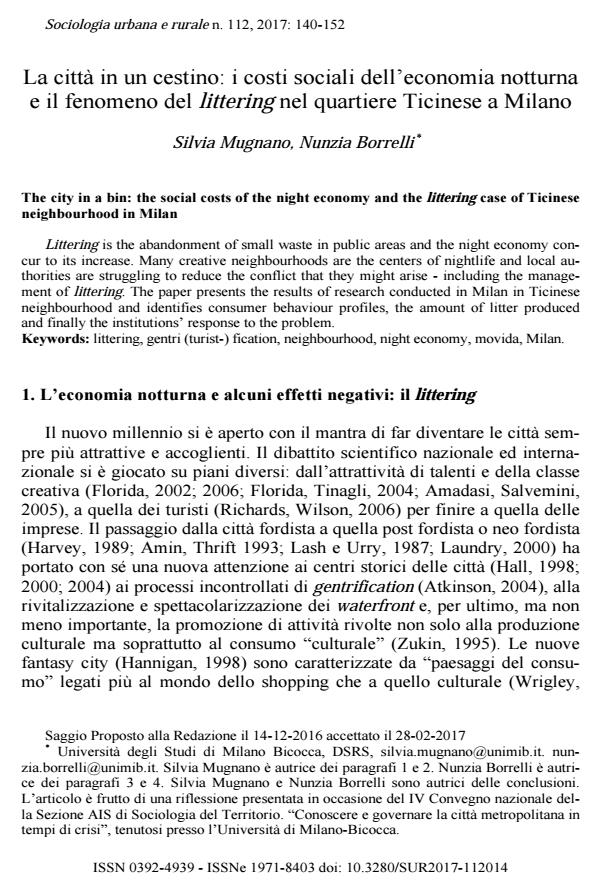La città in un cestino: i costi sociali dell’economia notturna e il fenomeno del littering nel quartiere Ticinese a Milano
Titolo Rivista SOCIOLOGIA URBANA E RURALE
Autori/Curatori Silvia Mugnano, Nunzia Borrelli
Anno di pubblicazione 2017 Fascicolo 2017/112
Lingua Italiano Numero pagine 13 P. 140-152 Dimensione file 213 KB
DOI 10.3280/SUR2017-112014
Il DOI è il codice a barre della proprietà intellettuale: per saperne di più
clicca qui
Qui sotto puoi vedere in anteprima la prima pagina di questo articolo.
Se questo articolo ti interessa, lo puoi acquistare (e scaricare in formato pdf) seguendo le facili indicazioni per acquistare il download credit. Acquista Download Credits per scaricare questo Articolo in formato PDF

FrancoAngeli è membro della Publishers International Linking Association, Inc (PILA)associazione indipendente e non profit per facilitare (attraverso i servizi tecnologici implementati da CrossRef.org) l’accesso degli studiosi ai contenuti digitali nelle pubblicazioni professionali e scientifiche
Littering is the abandonment of small waste in public areas and the night economy concur to its increase. Many creative neighbourhoods are the centers of nightlife and local authorities are struggling to reduce the conflict that they might arise - including the management of littering. The paper presents the results of research conducted in Milan in Ticinese neighbourhood and identifies consumer behaviour profiles, the amount of litter produced and finally the institutions’ response to the problem.
Parole chiave:Littering, gentri (turist-) fication, neighbourhood, night economy, movida, Milan.
- Tra consumo e rischio: l'ambivalenza della vita di notte tra gli studenti di Montpellier e di Bologna Gabriele Manella, Emanuele Giordano, Tommaso Rimondi, Dominique Crozat, in SOCIOLOGIA URBANA E RURALE 126/2022 pp.97
DOI: 10.3280/SUR2021-126006
Silvia Mugnano, Nunzia Borrelli, La città in un cestino: i costi sociali dell’economia notturna e il fenomeno del littering nel quartiere Ticinese a Milano in "SOCIOLOGIA URBANA E RURALE" 112/2017, pp 140-152, DOI: 10.3280/SUR2017-112014